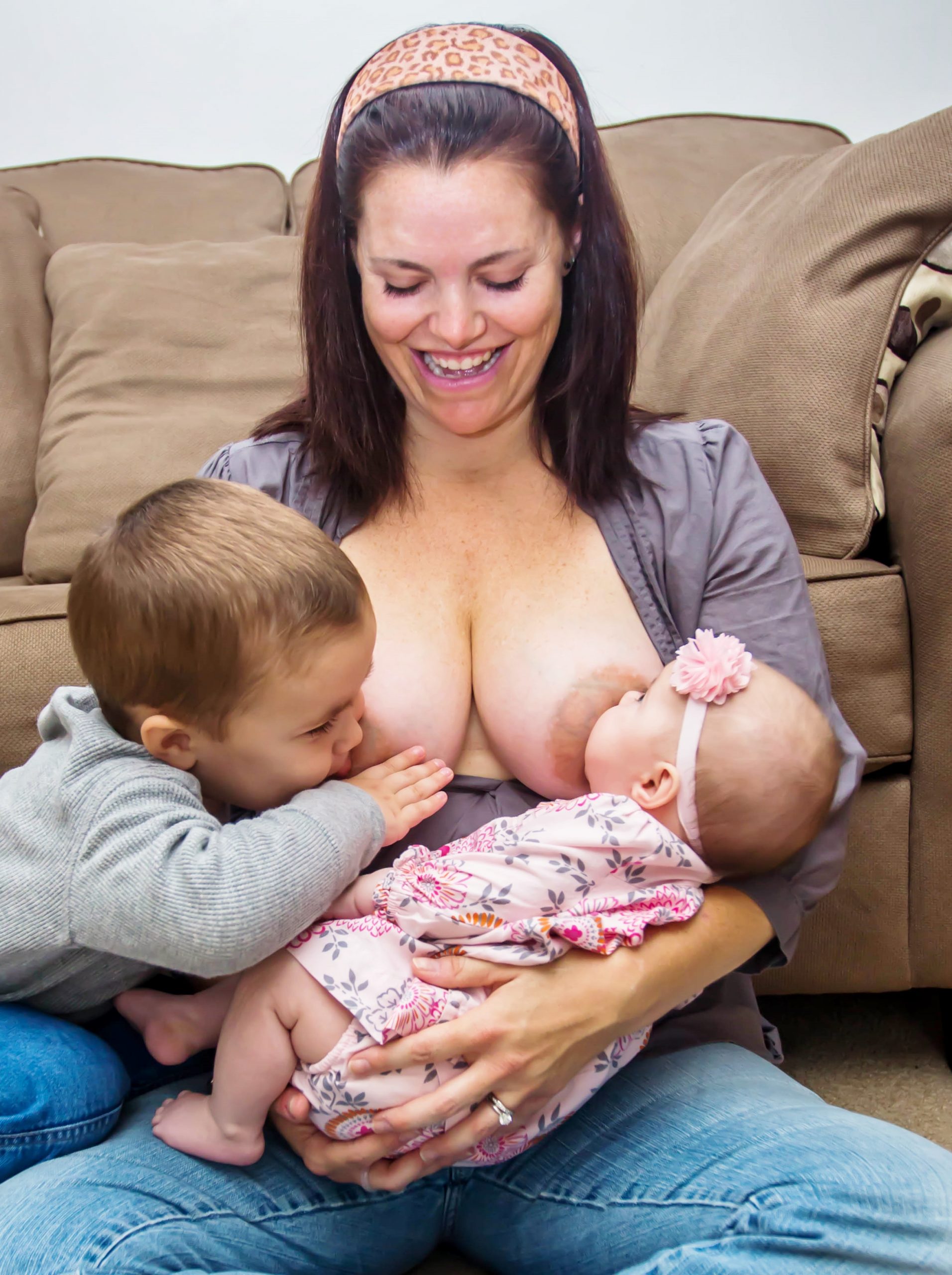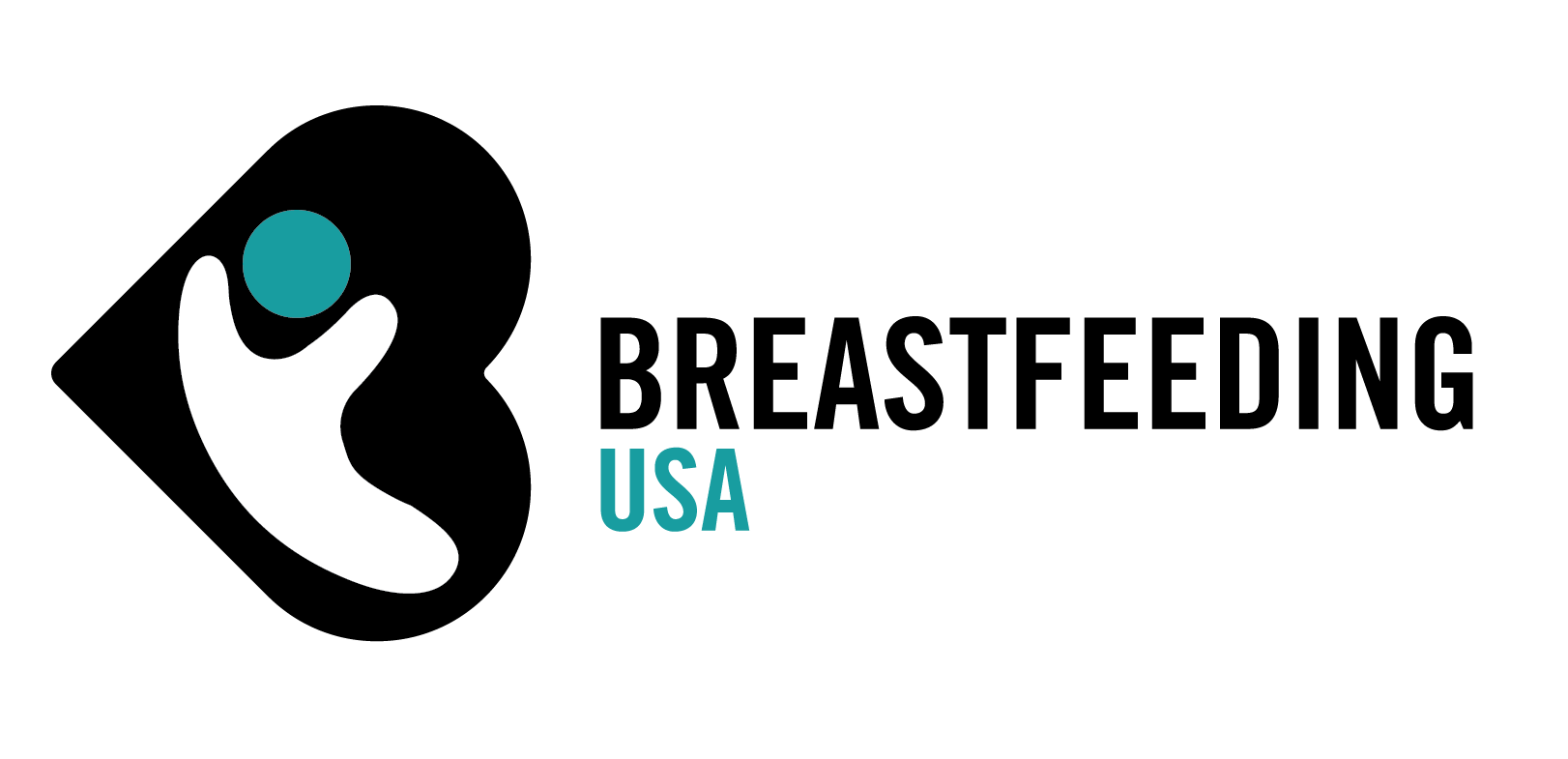By Mia Gonzalez

Tandem breastfeeding two children at once is something I never expected to do, and I certainly never imagined breastfeeding three (you only have two breasts after all; how would that even work?). But somehow I ended up nursing 21-month-old twins and a newborn. It sounds a little unusual to me now, too, but in the moment it was the right choice for my family. Most people don’t anticipate breastfeeding two (or more!) children at the same time, but there are some wonderful reasons to give it a try.
What is tandem breastfeeding?
Tandem breastfeeding is defined as two or more children of different ages who breastfeed at the same time. It might refer to having one child on each breast simultaneously or children who take turns breastfeeding throughout the day.
Do people really tandem breastfeed?
You might be asking yourself, “Since I’ve never heard of anyone I know tandem breastfeeding, do people really do it?” Absolutely. You may have heard of someone who has breastfed twins, but you might have never heard of someone breastfeeding children of different ages. In many cases, the older child only nurses a few times a day. S/he may not need to nurse when out in public and might be too busy when people are around, so often tandem breastfeeding occurs in the privacy and quiet of home. Because breastfeeding a toddler is beyond the current cultural norm, mothers who are breastfeeding toddlers often just don’t talk about it.
Why should I consider tandem breastfeeding?
Children who are allowed to wean themselves typically will continue nursing from 2 to 6 years. However, in the United states, only 37.6% of children are breastfeeding at 12 months, though the World Health Organization recommends breastfeeding AT LEAST until two years of age. Breastfeeding provides comfort, nutrition, normal development of the immune system, and social and intellectual development for as long as it continues. Breastfed toddlers may be less likely to be picky eaters because of the ever-changing flavor of breast milk!
The addition of a sibling is a huge change for a family. Breastfeeding connects children with their mothers in an emotional and physical way and also connects siblings as they “share” their mother’s milk. It’s very common for mothers to feel some guilt about spending so much time caring for their newborn when that time used to be spent caring for their older child. Breastfeeding allows mothers to reassure themselves and their older child that they still share the same bond and love as they did before.
Breastfeeding through pregnancy.
Many mothers who continue to nurse after they find they are pregnant fear they will not make enough milk or the right kind of milk for their new infants. Rest assured that the human body resets when a new baby is born and that it will produce the right kind of milk for the newest member of the family. Colostrum is very important as the first food and immune defense for the immature newborn. When the new baby is given free access to the breast, he will receive all the colostrum that he needs to get the best start in life.
But wait: If the milk changes for the newest baby, will my older child get what he or she needs from breastfeeding? Yes. Human milk is beneficial for all children of all ages. A toddler can benefit from the nutrient-dense colostrum (though you might notice some looser-than-normal stools for a bit) and the mature milk that follows. It is likely that the older breastfeeding baby or toddler is eating other foods.
Breastfeeding is also much more than nutrition. A child might continue to nurse after a mother’s milk has “dried up” for the comfort, closeness, and hormonal boost that comes from breastfeeding. Many women say they noticed a dip in their milk supply at the beginning of their pregnancy. This is due to hormonal changes, and there is no way to prevent it from happening About half of pregnant women report that their milk significantly diminished around the middle of pregnancy. For many babies this is a natural time for weaning, while others will continue to nurse. Whether or not an older sibling is nursing, the mature milk will begin to change to colostrum production during the second trimester of the pregnancy.
Many women experience discomfort, such as sore nipples, while breastfeeding during pregnancy. If this is the case for you, setting limits for your breastfeeding child is often a good compromise between nursing on demand and weaning completely.
A common concern about nursing during pregnancy deals with the ability to maintain good maternal nutrition for a growing fetus, the mother, and a breastfeeding child. Maintaining a healthy diet will always be more important during pregnancy with continued breastfeeding, but it’s not significantly different from good nutrition during pregnancy itself–just more of it! Find out more about good nutrition for pregnant and breastfeeding moms.
If you have previously miscarried a pregnancy or delivered preterm, you may wonder if breastfeeding during subsequent pregnancies may increase your risk for either of these situations to happen again. Just as each child is different, so is each pregnancy. Talk with your healthcare provider about your situation. While breastfeeding can stimulate uterine contractions, so does sexual activity and to a much greater extent. If sexual intercourse isn’t prohibited, then continued breastfeeding is less likely to be a concern. Ask questions of your health care provider, an International Board Certified Lactation Consultant (IBCLC), a Breastfeeding USA Counselor, and other mothers to learn as much as possible. Consider the needs of your older nursling and your own and your partner’s feelings as you decide what is best for you and your unborn child
Some health care providers may not be well informed about the benefits of continuing to breastfeed through pregnancy, nor about the body’s ability to handle it. Check out Myths vs. facts about pregnancy and tandem breastfeeding.
How do you juggle breastfeeding two children?
Sometimes juggling is the perfect word for breastfeeding two children! There are many different ways to approach tandem breastfeeding. How you choose to manage it will depend on your comfort level and the disposition of your children.
The most straight-forward option is to nurse your children at different times. In the early days as you and your new baby settle into a breastfeeding rhythm, you might choose this approach out of necessity, giving your newborn first dibs on the colostrum. There are ways to gently set boundaries for an older child when needed, as mentioned above.
Be prepared for a child who was previously uninterested in breastfeeding to be suddenly very interested again; this may include children who were previously weaned! When your older child is adamant about breastfeeding when the baby nurses, you might find it easier to breastfeed them at the same time. Getting creative will be important to finding positions that work for you. Usually, it’s easiest to get the littlest child settled first. Using a pillow or lying on your side can enable you to have at least one hand free to help your older child get into position. Once baby is comfortably latched and feeding, you can help your older child find a comfortable spot or (depending on the age and skill of your older child) letting them get comfortably situated all by themselves.
Possible positions include: older child and baby both straddling mom’s legs as she reclines (more information about laid-back breastfeeding here), older child in cradle position with baby lying on top in the football hold, baby in cradle hold with older child kneeling or sitting next to mom, baby lying next to mom and older child sitting at mom’s back reaching over or lying on top of mom.
Here are some more tips for juggling a newborn and toddler.
Making enough milk.
Just like breastfeeding one newborn, establishing good milk production means feeding your baby on cue. The question of when to feed your baby versus your older child is common. Should the baby always go first? Will the older child take all the hindmilk? How can I be sure the baby is getting enough?
Your breasts will respond and make as much milk as needed, based on the amount of milk that is removed. Your baby will let you know if s/he is getting enough with the usual clues: frequent breastfeeds (at least 8-12 times in 24 hours), many wet and soiled diapers, steady weight gain. Newborns feed often; this is normal and how your body establishes milk production.
During the first few days, the baby should nurse first to ensure they get a full share of colostrum. After the first few days, you’ll need to find a breastfeeding strategy that works for you. You can alternate who gets which breast first, you can assign one breast per child (for the hour, the day or permanently), you can feed both children on both breasts as is convenient, or use a combination of all these strategies! There is no reason to be concerned about foremilk/hindmilk imbalance. Over the course of the day, your milk provides what your children need.
Is Tandem Breastfeeding For Everyone?
Not necessarily. The experience is different for every mother. It is natural for a mother to focus strongly on the needs of the new baby, and breastfeeding is the way she does this. She may feel more comfortable meeting the needs of the older child in other ways. Tandem nursing can be overwhelming at times. Some mothers set limits on the number of times that the older nursling can be at the breast. Other mothers actively encourage the older child to wean. Some mothers look forward to tandem breastfeeding and then are dismayed to find that they really don’t like it. There is no right or wrong here. Do what feels right for you and your family.
Tandem Breastfeeding Can Be Awesome!
Have you ever seen the slogan, “I make milk. What’s your superpower?” Breastfeeding one baby can be one of the most empowering and rewarding experiences of a woman’s life. For those women who choose to do so, tandem breastfeeding can expand those feelings exponentially! For me, tandem breastfeeding was just plain awesome.
Further reading:
Mia Gonzalez
Mia lives in Connecticut with her four children. She is the mother of two singletons and one set of twins. She breastfed her one-year-old twins through her last pregnancy and then tandem-nursed the twins and her youngest child for over a year.
© Copyright Breastfeeding USA 2015. All rights are reserved.
